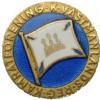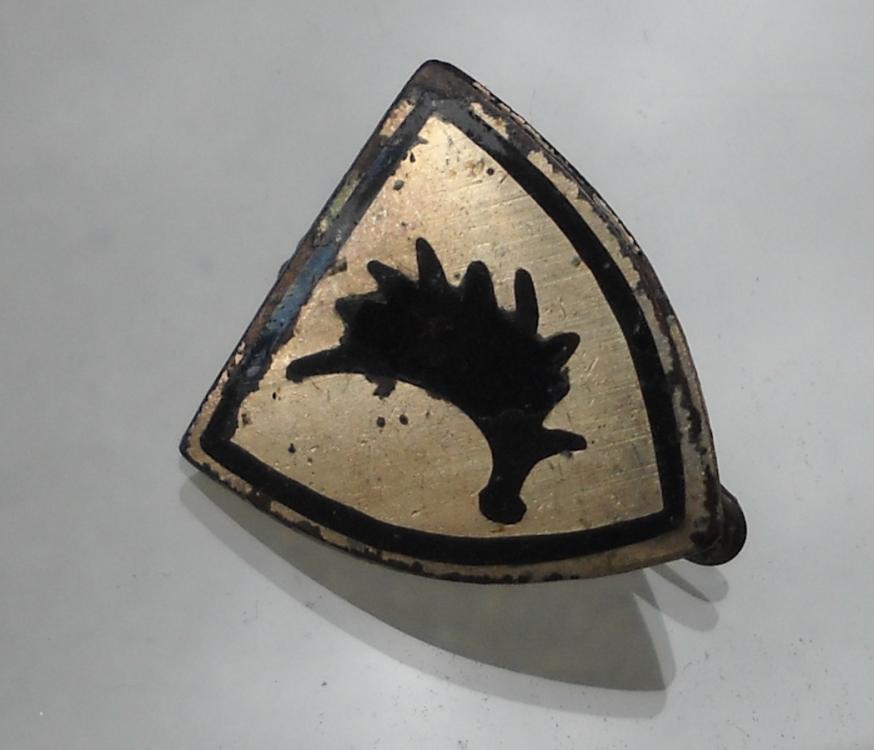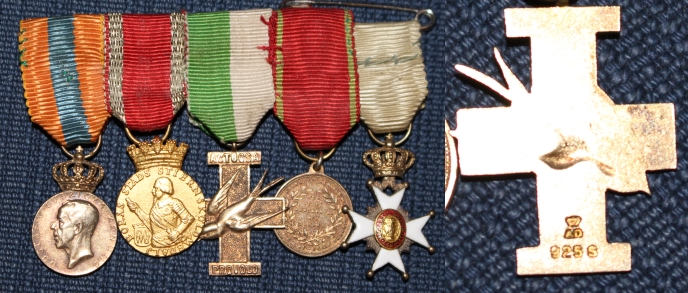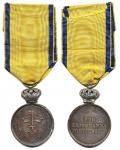-
Posts
408 -
Joined
-
Last visited
-
Days Won
1
Content Type
Profiles
Forums
Blogs
Gallery
Events
Store
Everything posted by kimj
-
These aren't really found on the open market yet, too many living recipients. I have only seen one or two full size ones being sold, those were without minis. But since she intends to wear it she must have misplaced her original. In this case I think the court will be able to help you or at least point you in the right direction to get a replacement. email them. http://www.kungahuset.se/royalcourt.4.367010ad11497db6cba800054503.html
-
Hi Uwe Thanks! These wordless pins are a pain to google. So no military connection but probably related to the Baltenkreutz. /Kim
-
Hi I have bought this at a flee market with a Baltic cross. If they go together I don't know. But there is some likeness to the insignia of the freikorps von Brandis elkhorn. Is this possibly an old comrades badge/pin for post war meetings? Any input welcomed. /Kim
-

Rick Lundstrom's Soviet Collection at auction
kimj replied to Paul C's topic in Russia: Soviet Orders, Medals & Decorations
http://www.benemerenti.de/ -
I have an unusual problem for myself. I have stumble across a story about a Swede who claims to be a Papal warhero in about 1870. Supposedly awarded with order of St Gregory the great, order of St Sylvester and a neckworn medal Benemeriti. As you can see quite a handful. Are there any available lists to confirm him as a Papal knight? Or call him out as a liar. I have been in contact with the secret archive in the Vatican but I'd like some phaleristic expertise in the matter. All help greatly appreciated. /Kim
-

Unknown medal on Swedish bar. Danish?
kimj replied to kimj's topic in Northern European & Baltic States
How to wear Swedish medals/orders is regulated only if you are at the royal court or in the military. All other civilians are not bound by rules but rather to practice, what is OK takes a lot from military wear though. When it comes to military medal bars they are not that often with "pure" unofficial civilian awards. Most are usually organizations connected to the military as volunteer groups. But there is a list on what you can and cannot wear on uniform. On this list there are many semi-official medals that have been granted the use of the king's profile. This is a group with 45 awarding organizations (2015). The next group is the unofficial medals (not royal or state), a long one with plenty of local military medals and others. Here's a link with uniform regulations, on page 613 the medal section starts. All in Swedish. Uniform regulation 2015. This being said there is always that guy who wants to show of all his medals and regulations be damned. I think the germans call this "ordenshunger". /Kim -

Unknown medal on Swedish bar. Danish?
kimj replied to kimj's topic in Northern European & Baltic States
A little gooling didn't get me anything. But having a good forum with knowledable collectors did. It must be something like a "well done"-medal for the society then? The order of Vasa is only pined to this with a separate safty pin. So I doubt it has relevance to the other medals, but until I'm certain I keep it there. The other medals are: * Blue Star gold medal of merit. The Blue star used to be, until 1975, the organisation that helped the armed forces with their horses. Today they have training for animal care. * City of Borås medal, for municipal workers * Svalen-medal * Swedish women's society for the protection of animals So I think this is a medal bar for someone to use in a eviroment with a strong interest in animal care. The Danish cross fits in perfectly in that context. The fact that she shouldn't wear it on her uniform at Blue star probably meant less. Mange Takk Michael! /Kim -

Unknown medal on Swedish bar. Danish?
kimj replied to kimj's topic in Northern European & Baltic States
The text is: ACTUOSA / PROVOLO. So probably something to do with aminal protection like the last Swedish medal. Would you agree with the stamp looking Danish Michael? Swedish silver stamps doesn't look like this. /Kim -
Hi I got this medal bar recently. The only medal I'm having problem ID-ing is number three. I think it could be danish as the silver mark looks like those of A. Dragsted in Copenhagen. But I would like to know what it is. Anyone? Kim
-

sweden Researching Order of Vasa Recipient
kimj replied to paja's topic in Northern European & Baltic States
No problem. I'm happy to help out in "my" field, A Wasa knights cross for a lieutenant who's also a foreigner.... That's not bad. Maybe he was part of a state visit and did favours to the court. The problem with knights orders is that they don't have a citation. The knights are deemed worthy and accepted as knights by the king, no motivation. /Kim -

sweden Researching Order of Vasa Recipient
kimj replied to paja's topic in Northern European & Baltic States
There are some lists online the ones nearest your timeframe are 1881, 1905 and 1915. Start looking here in the "foregin" section of the Wasa order 1905. It is sorted by last name. I have access to most of them if you can't find your ancestor. Those can NOT be found online. Here you can find the knights cross, probably the same as he would have gotten. Knights orders of the order of Wasa are not hard to find, hold out for a nice example. /Kim -
Internetauctions at its best. No doubt Finnish awards are popular in Sweden and prices are going up. But one internetauction can't say much about price in general. All it takes is two people who really, really wants it. I remember a plaque for the "Folklandskampen 1941" on our internetauction site that I wanted. That ended at well over 120USD, too much for me. Six months later I found one in another auctionlot. That cost me 30USD with a number of other medals as well. So what is the "real" price.... /Kim
-
Your're welcome! Swedish phaleristics is a subject not very much is written about. The award trade between Prussia-Sweden-Russia have only been the subject of one article I know of: "När svenska tapperhetsmedaljer "byttes" mot ryska S:t Georgekors", Nordisk Numismatisk Årsskrift 1942. The text is in Swedish. The Russian St Anne medal was never given to Swedes as far as I know. There wasn't anything in the Swedish award system to trade with, all we had was bravery medals. The medal you show looks awful, condition wise. If it's good or bad I can't say as czarist medals are far from my expertise. I'm sure you can get a more qualified answer from the Russian section of the forum. /Kim
-
Mr Nelson, welcome to the forum! I hope I can shead some light on Swedish medals of Napoleonic times for you. Medals at this time was a "thank-you-for-your-service" award that mostly went to wounded soldiers. There was a small sum of money attached to being awarded a medal. So when you got back home, was fired from the military and kicked out of the house (because it was the army who owned it) at least you had that. Those who recovered continued their service, like Gadd. His Russian cross was part of an award-trade between Russia and Sweden. They got 200 swedish bravery medals and the swedes got 200 St George crosses for NCO and privates. The Russians had no say in what specific soldier should get a cross. Instead the regiments got a number of awards to give to the bravest soldiers. Some commanders did not like this because the number given out was so small that many brave soldiers would be without crosses. The number for Kalmar regiment was three (!) crosses. The Order of St Anna is probably a mix up, because it was an award for higher status people, not common soldiers like Gadd. The most common missconception of the Russian award is that the soldiers cross is an Order of St George. This is know to have a couple of soldiers going around back home calling themselves knight of the order of St George..... But it's a lower class of St George and no knight titles involved. So Gadd probably "only" had two awards the Swedish medal for bravery and the Russian cross of St George. But that is not bad. Also, there are separete lists of the troops in Stettin, so no "hole" 1807-1817. The normal peace time lists were not kept during wartime. They can be found online as a pay service. Finaly. There are no lists of the enlisted men's medals but most (all?) the gold officers bravery medals are listed at the national archive. If there are any other questions I'd be happy to help. /Kim
-
I couldn't find any van Holthe when I checked in the "statskalender". But I only sampled a couple of years from 1860-1939 so I guess there is a theoretical chance that he could be in a book I didn't look in. There is also the slim chance he didn't make it to the list if he past away between editions, only living recipient are listed. Most likely place to find him is as a attaché, like Paul and Jonas wrote. But the good news are that there aren't that many Dutch recipients of the order of the sword. Maybe there's a year stamp on the order, that would help in dating the award. For those who want to check to lists you can have a go here: (in the book look for Kongl. Svenska Riddare-Ordnarne) http://runeberg.org/statskal/ No foreign awards listed after 1940. You had to be military to get the order of the sword. The first paragraph in the statues says: This order is awarded to officers in the army and navy ... But maybe the sword mix up comes from the fact that the Sign of the sword was awarded with and without swords. The Sign of the sword is not an order, a merit cross for NCOs, but it is a part of the Royal Order of the Sword (not the insignia but the actual order). /Kim
-

Sweden SWEDEN ORDER OF THE SWORD - OLD MODEL
kimj replied to Graf's topic in Northern European & Baltic States
Peter is right about the years of service. I don't think that ever changed much. Back then the soldiers profession was for life so many had a lot of years of service. The record being something like 50+ years. Here is a pic of one that sold this year, not sure about the ribbon - looks too fresh. They go for a bit more than the "normal" types, but not much. I didn't bid on this one because of the bad strike PS Nice medals Peter! I really need to get me a nice medal to honor my great great grandfather distinktionskorpral Lyckman. /Kim -

Sweden SWEDEN ORDER OF THE SWORD - OLD MODEL
kimj replied to Graf's topic in Northern European & Baltic States
Yankee: There are no books (to my knowledge) that deal in the medals variation. Everything I have seen written about it are just the history, this medal is heavily shadowed by the order. Adding to this shadow is the fact that it was only awarded for long service. But I can give a basic idea of the most common models: Crown mounted with a hinge. This is the first model and used to late 1850-ties. At this time most hinges disappeared from both medals and orders. Small crown. Used into the reign of Gustaf V. When the change to a larger crown happened is a matter of future research. Somewhere here is the year stamp introduced by law for medals. I need to dig some to find the exact year, but it's something like 1900-10. Large crown. "Modern" crown. King Gustav VI wanted a more modern looking crown and the result was the type as shown here, from about 1950. This was the final type, as the medal stopped being awarded in 1975. And as a side note I can mention that my own great great grandfather got this medal for his service in the Royal Västmanland regiment for 27 years of service. As for Napoleonic times I do not know of any published lists. Could be some in private hands as all the records are probably still in the archives. But the time and knowledge to pull them and sort it all out is not done in five minutes. /Kim -

Sweden SWEDEN ORDER OF THE SWORD - OLD MODEL
kimj replied to Graf's topic in Northern European & Baltic States
No, they are much easier to date as they have to have silver stamps according to law. Those made before the law can be dated by the style of the crown. The medal o the pic has a year stamp and the maker MJV stamped on it. /Kim -
Not Swedish. I would think more typical of Danish style crowns. /Kim
-
I got my copy as soon as I was done reading. Back in 2007 I wanted one but it never resulted in a book. Now I got a better version for less money. I guess good things comes to those who wait. Dave would it be OK if I translated one citation for my blog? It's in Swedish and all the texts are about phaleristics. I will include a link to amazon, not sure it will do much for sales though... My readers are few but faitful. /Kim
-

Sweden Swedish participation in the Napleonic war
kimj replied to Peter J's topic in Northern European & Baltic States
Nice stuff. I was recently reading a Swedes account of his part in the 1813-14 war, recommended to all Swedish readers out there: Carl Johan Ljunggren; Minnesanteckningar... /Kim -
It's a prize medal for shooting results in competitions organized by Skåne skytteförbund (shooting clubs association). Value are low on sports medals in general and these are no exception. They can be found in gold or silver and those at least have metal value. /Kim
-

Finland Finnish miniature chain
kimj replied to Peter J's topic in Northern European & Baltic States
You could check the Finnish recipients of KNO in a late 30-ties "statskalender" it shouldn't be too many. A quick check makes me think politician, some higher official or perhaps even medical doctor. Maybe the Olympic order will narrow it down better. /Kim





